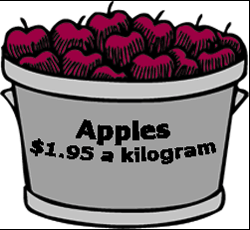|
 |
 |
|
|
The assessments
included sixteen tasks investigating students’ understandings,
processes and skills in the area of mathematics called measurement.
Measurement includes knowledge, understanding and use of systems of
measurement, the use of measurement apparatus, and processes of predicting,
calculating and recording. This chapter includes tasks relating to money.
Sixteen tasks were identical for both year 4 and year 8. Seven tasks
had overlapping versions for year 4 and year 8 students, with some parts
common to both levels. Three tasks were attempted by year 4 students
only, and seven by year 8 only. Twelve are trend tasks (fully described
with data for both 1997 and 2001), ten are released tasks (fully described
with data for 2001 only), and eleven are link tasks (to be used again
in 2005, so only partially described here).
The tasks are presented in the three sections: trend tasks, then released
tasks and finally link tasks. Within each section, tasks attempted (in
whole or part) by both year 4 and year 8 students are presented first,
followed by parallel tasks, then tasks attempted only by year 8 students.
Averaged across 101 task components administered to both year 4 and
year 8 students, 25 percent more year 8 than year 4 students succeeded
with these components. Year 8 students performed better on 95 of the
101 components. As expected, the differences were generally larger on
more difficult tasks. These often were tasks that many year 4 students
would not yet have had much opportunity to learn in school.
There was little evidence of change between 1997 and 2001. Averaged
across 41 trend task components attempted by year 4 students in both
years, 2 percent more students succeeded in 2001 than in 1997. Gains
occurred on 25 of the 41 components. At year 8 level, with 45 trend
task components included, 2 percent fewer students succeeded in 2001
than in 1997. Gains occurred on 15 of the 45 components.
A representative range of measurement systems, processes and applications
was covered in the set of tasks attempted by students. At both levels
students’ skills of reading measurements were substantially stronger
than those of making good estimations. Moderate to low percentages of
year 8 and year 4 students demonstrated abilities to effectively explain
processes and strategies for making and checking measurements.
|
